Reports from the field: Wetpixel Whale Sharks 2018
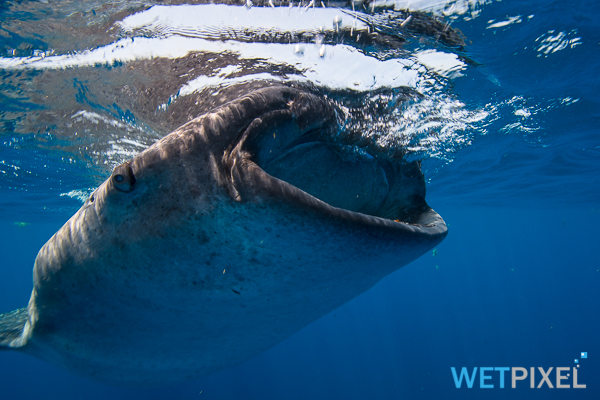
The 2018 Wetpixel Whale Sharks trip is underway! Every year hundreds of whale sharks (Rhincodon typus) gather North of the island of Isla Mujeres, close to Cancun, Mexico. The aggregation provides one of the most amazing natural spectacles in the underwater world. Jacques Cousteau famously claimed that he had only ever seen 3 whale sharks in his life, if he had been able to visit Isla, he would have increased this number by a significant margin!
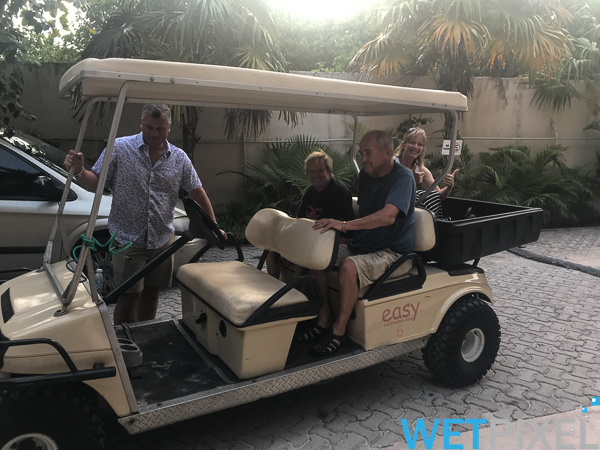
Our group arrived over the past couple of days, and we met for breakfast in the hotel Playa la Media Luna to discuss how we go about photographing and interacting with the sharks. We then mounted up on the golf cart and set out for the marina, which is just a 10-minute drive from the hotel.
Here we got on our boat for the next week, Lily M and met up with skipper Rogelio Delgado and expert whale shark spotter Juan. Within minutes, we were off.
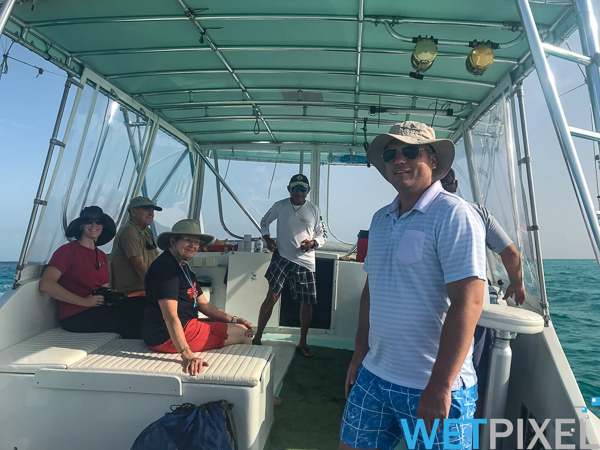
The whale sharks gather to feast on the plentiful fish eggs in the water (when you emerge from the water there often many stuck to your suit). Rogelio told us that the eggs at this time of year are from rainbow runners (Elagatis bipinnulata) rather than from the little tunny (Euthynnus allertteratus) that are so common earlier in the year. The slick of eggs varies in position due to the spawning sites and the action of wind, tides, and currents, and we found the sharks about 70 miles North of Isla. Once there, we wasted no time in getting in the water.
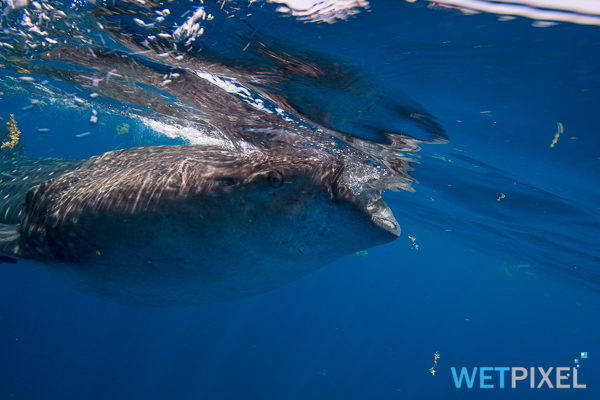
The aggregation is in many ways an example of effective ecotourism. It supports many local people and provides an income from them as a natural resource, rather than as an ingredient in soup. There is no doubt however that there was a risk that the number of visitors might negatively impact on the animal’s welfare, and over the past few years, the Mexican government has introduced and enforced a few new regulations. A key one is that all boats must have and display permits. This helps limit the numbers of boats and in addition, in order to hold a permit, boat captains must also undergo some training in how to interact safely with the sharks.
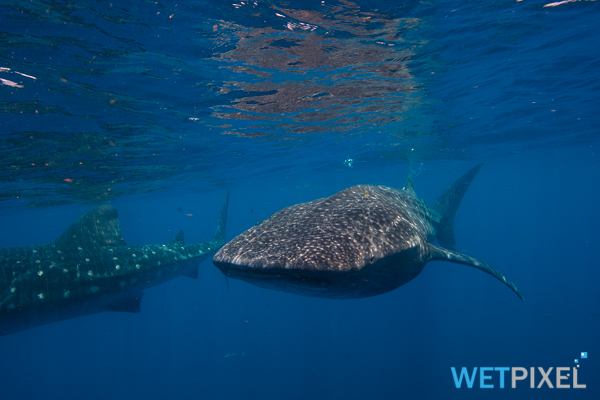
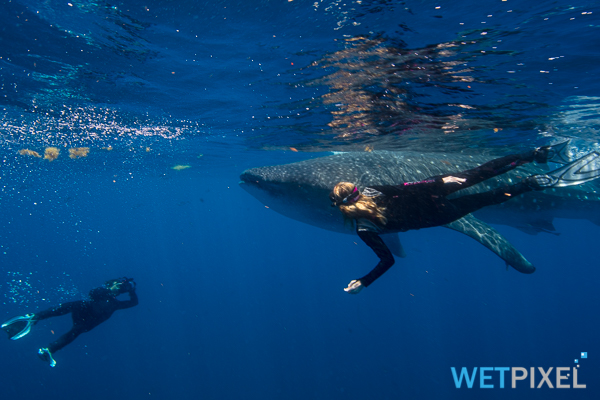
Another regulation is that each boat may only have a maximum of 2 people in the water along with a guide at any one time. Whilst this sounds somewhat onerous, given that we tend to spend 5-6 hours out with the sharks, and only have 6 guests on the boat, it still allows plenty of time for interactions.
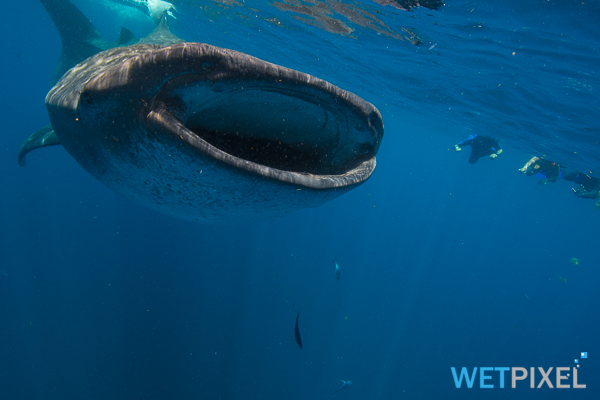
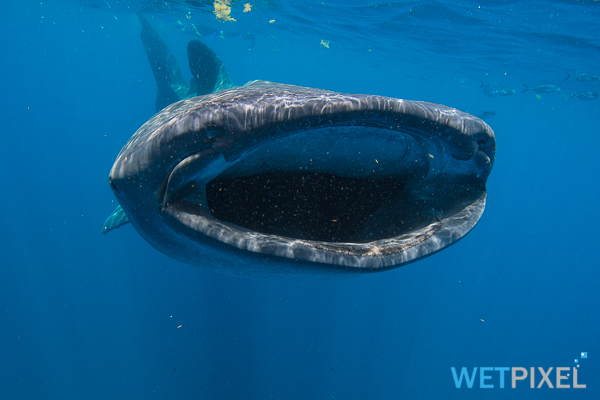
The whale sharks have remoras (Echeneneidae sp) attached to them:
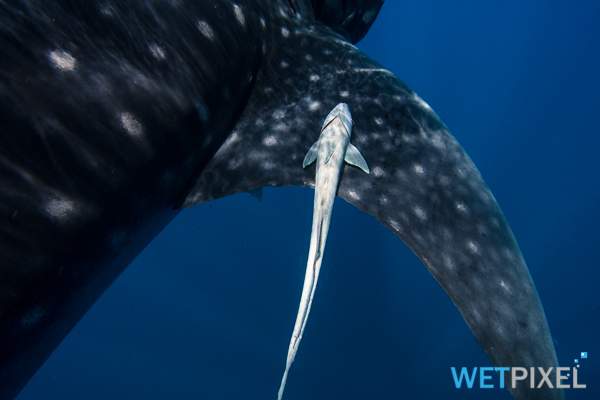
One of the guests asked me to describe the number of sharks that were around today and I described it as “below average.” Given that there were probably 50 or so sharks around, this perhaps shows the scale of just how incredible this aggregation is. We also saw manta rays (Mobula birostris) and both turtles and dolphins from the boat.

Tomorrow will be our first full day as we aim to set off at 7 am. Please check back on here for updates tomorrow night…..
Day 1.
Day 2.
Day 3.
Day 4.
Day 5.